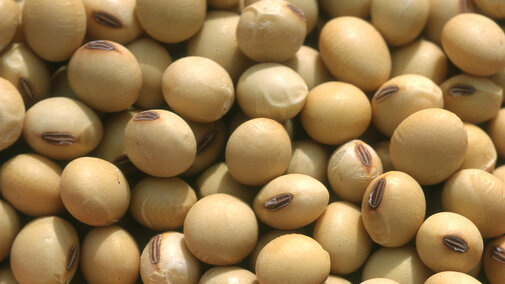The big surprise in the markets last week was the USDA World Agriculture Supply and Demand Estimate (WASDE) released Thursday, August 10. The report projected U.S. average soybean yield 3.1 bushels per acre above the trend line at 49.6 bushels per acre. This was a shock to some considering that USDA Crop Progress Reports have been stating that national soybean crop condition ratings are lower than normal (Table 1). These higher estimated yields combined with record numbers of planted acres led to higher estimated U.S. soybean ending stocks of 475 million bushels (12.94 million metric tons [MMT]).
The United States is the leading producer of soybeans for export, producing over 30% of global supply. The U.S. is closely followed by Brazil, which is expecting 107 MMT of production, and 36.71 MMT of ending stocks. Total global soybean ending stocks for 2017 are projected to be 97.78 MMT, a record high.
With two months left in the soybean production season, USDA yield predictions will change. A significant factor in yield will be weather conditions. Good weather in top-producing states could improve crop condition and ultimately yield. Seven of the last 20 years (35% of the time), the August USDA estimated yield was higher than the final yield. In 2003, the August USDA over shot national soybean yield by 5.5 bushels per acre (Good, 2017). The September, October, and November WASDE reports will continue to adjust the yield estimate as well as anticipated harvested acres, providing a clearer picture of production as harvest approaches.
Regardless of possible changes in future estimates, now is the time to develop a written grain marketing plan and implement that plan. The worst thing that soybean producers can do is to hold grain for higher prices that may never come.
For those with soybeans in the bin, soybean prices traditionally track downward from August to harvest. Look for opportunities to sell any remaining bushels sooner rather than later.
For those who have priced soybeans in the field, there may be some opportunities to capture a higher price than those available at harvest.
A key component of pre-pricing soybeans is establishing realistic target prices. Some farmers may prefer to not pre-price soybeans if cash prices are below their break-even. However, current market conditions may not offer prices above your cost of production. If this is the case, try to price soybeans close to the price established by your banker on your cash flow document. Although this might not capture all costs, it will at least allow you to pay off your operating note.
Another challenge will be to decide how much of your anticipated production to price. A general guide is not to pre-price more bushels than you have insured. This strategy allows you to use your indemnity payment to buy back bushels should your production fall short of your APH.
Pricing in a downward trending market is difficult. However, a low price is better than continuing to watch markets decline if USDA is correct in their current production estimates.
| 2017 acres planted (Millions) | Aug. Est. Yield in bushels per acre, 2017 | Aug. Est. Yield in bushels per acre, 2016 | Week 31 Est. Crop Condition Percent Good to Excellent, 2017 | Week 31 Est. Crop Condition Percent Good to Excellent, 2016 | Week 31 Est. Crop Condition Percent Good to Excellent, 5 Yr. Avg. | |
|---|---|---|---|---|---|---|
| Illinois | 10.4 | 58 | 57 | 64% | 79% | 58% |
| Iowa | 10 | 56 | 57 | 59% | 82% | 62% |
| Minnesota | 8.2 | 49 | 47 | 74% | 80% | 70% |
| North Dakota | 7.2 | 33 | 33 | 37% | 73% | 68% |
| Missouri | 6 | 49 | 48 | 64% | 70% | 47% |
| Indiana | 5.9 | 55 | 55 | 54% | 74% | 56% |
| Nebraska | 5.7 | 58 | 59 | 58% | 77% | 62% |
| Ohio | 5 | 53 | 52 | 53% | 52% | 54% |
| Note: Data from USDA NASS. The listed states account for approximately 70% of U.S. Soybean, individually producing more than 5% each. | ||||||
Reference
Good, Darrel, Todd Hubbs, Updated Supply/Demand/Price Prospects for Corn and Soybeans, http://farmdoc.illinois.edu/webinars/downloads.asp, Accessed August 11, 2017.

